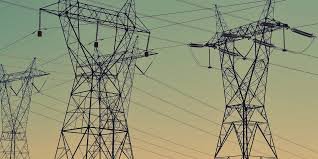Delhi households are in for a costlier summer, with electricity bills expected to rise by 7% to 10% during May and June. This increase comes as a result of a hike in the Power Purchase Adjustment Cost (PPAC)—a charge that reflects the changing cost of buying electricity.
Why Are Power Bills Going Up?
The PPAC is added to your electricity bill to cover fuel cost fluctuations in power generation. When the cost of coal, gas, or other fuels goes up, discoms (distribution companies) pass it on to consumers through this adjustment.
This time, the hike was approved by the Delhi Electricity Regulatory Commission (DERC) based on increased input costs reported by Delhi’s three private discoms. While it’s within their rights, it was done without much prior public awareness, which has raised eyebrows among citizen groups.
“These adjustments happen quietly. Consumers often don’t realize why their bill suddenly goes up,” said Saurabh Gandhi, General Secretary of URJA (United Residents Joint Action).
How Much Extra Will You Pay?
Depending on your monthly electricity usage, you could be paying ₹80 to ₹200 more each month, even if you fall under the government subsidy scheme.
Here’s a simplified breakdown:
| Monthly Usage | Approx. Previous Bill | Approx. Revised Bill | Estimated Increase |
|---|---|---|---|
| 200 units | ₹1,100 | ₹1,180 | ₹80 |
| 300 units | ₹1,650 | ₹1,780 | ₹130 |
| 400 units | ₹2,250 | ₹2,420 | ₹170 |
For families running air conditioners and other heavy appliances through the summer, the impact could be more noticeable.
“I usually consume about 350 units a month, and my latest bill was nearly ₹180 higher than the month before,” said Priya Mehra, a resident of Mayur Vihar. “I thought I had used more electricity, but it turns out it’s the new PPAC rate.”
What About Subsidies?
The Delhi government continues to offer electricity subsidies, but you need to opt-in each year.
- Up to 200 units: Full subsidy (no bill)
- 201–400 units: ₹800 subsidy
The issue, however, is that the PPAC is applied before the subsidy is calculated. This means even subsidized customers will see higher bills.
“Despite being eligible for the subsidy, my bill increased. The new PPAC is eating into the subsidy benefit,” said Rakesh Kumar, a senior citizen from Lajpat Nagar.
Is There a Lack of Transparency?
Yes, and this is a growing concern. While DERC allows PPAC revisions under certain conditions, there is no formal announcement, public hearing, or clarity for consumers. It’s this lack of transparency that has alarmed resident welfare associations.
“We need clearer communication and billing transparency. Most people don’t know what PPAC even means,” said Atul Goyal, President of URJA.
Experts believe that a public dashboard showing PPAC calculations, power procurement costs, and bill breakdowns would improve accountability.
“If the government expects us to pay more, they should also show us why in a transparent and easy-to-understand format,” said Ashish Malhotra, an independent energy policy researcher.
What You Can Do
While you can’t avoid the PPAC hike altogether, there are ways to reduce the impact:
- Track your monthly usage and try to keep it below 400 units, if possible.
- Use energy-efficient appliances, especially cooling devices like fans and ACs.
- Confirm your subsidy status using your discom’s app or helpline.
- Join local RWA forums to raise collective concerns and demand transparency.
- Lodge consumer complaints for unusually high or unexplained bills.
Final Thought
As Delhi heads into peak summer, residents are bracing for soaring temperatures—and now, higher electricity bills too. While some cost adjustments are inevitable, the lack of transparency and suddenness of these hikes is what makes them harder to accept.
Clearer communication from discoms and regulators could go a long way in easing the burden on consumers who are already juggling rising costs on multiple fronts.

